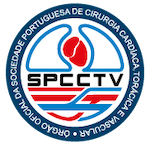A RETROSPECTIVE STUDY ON THE QUALITY OF LIFE OF PATIENTS WITH PRIMARY FOCAL HYPERHIDROSIS THAT UNDERWENT A VIDEO-ASSISTED THORACOSCOPIC SYMPATHECTOMY
DOI:
https://doi.org/10.48729/pjctvs.147Abstract
Backgroud: Primary focal hyperhidrosis affects between 1 to 4% of the general population, with a higher prevalence in teenagers and young adults. The condition is characterized by excessive sweating in 1 or more body part, most often the palms, face, armpits and soles. This condition causes a significant negative impact on patient’s quality of life. The pathophysiology of focal hyperhidrosis is believed to be due to excessive sympathetic stimulation, and videothoracoscopic sympathectomy is a recognized form of treatment. The aim of this study is to evaluate the post-operative quality of life of patients who underwent thoracoscopic sympathectomy.
Materials and Methods: This is a retrospective study of fifty-four patients with primary focal hyperhidrosis submitted to bilateral thoracoscopic thoracic sympathectomy at the Center of Cardiothoracic Surgery of Casa de Saúde da Boavista, between January 2011 and December 2014. The Quality of Life questionnaire and the Hyperhidrosis Severity Scale questionnaire were used to evaluate the quality of life in the pre-operative period and 3 months after surgery. Further to this, data was collected regarding medium-term follow-up by telephone. All patients underwent general anesthesia and had bilateral video-assisted thoracoscopic resection of the sympathetic chain.
Results: The majority of patients are females 59.3% (32). The mean age is 30.8 ± 7.70 (between 16 and 49 years). Prior to surgery, 85% of the patients had severe hyperhidrosis. 79.6% of respondents stated that general discomfort was promoted by the condition, with the Funcional-Social domain being the most affected aspect of their life (61.1%). The rates of peri-operative complications and major post-operative complications were null, and minor complications were 5.5%. After 3 months, improvement in patient’s quality of life and satisfaction level were of 100% and 96.3% respectively, however compensatory hyperhidrosis was observed in 53.7% of patients. 57.3% of the patients reported significant improvements in the Funcional-Social domain. Medium-term follow-up (mean=6 years) allowed for the evaluation of 31 patients (57.4% of the population), of whom 77.4% maintained compensatory hyperhidrosis. 93.5% reported to be highly satisfied with the surgical results and claimed to have improved their quality of life by 93.5%. 94% and 94.4% respectively of the patients evaluated in the medium term follow-up and after 3 months and in the medium term follow-up, recommend the surgery.
Conclusion: Sympathectomy by video-assisted thoracoscopic surgery (VATS) is an effective and viable therapeutic option for primary focal hyperhidrosis patients. Despite compensatory hyperhidrosis being observed at time, this procedure produces very satisfactory results particularly in regard to the patient’s post-operative quality of life.
Downloads
References
Esteves JA, Baptista AP, Rodrigo FG, Gomes MAM. Dermatologia. 3rd ed. Lisboa: Fundação Calouste Gulbenkian; 2005. p. 495-498.
Eisenach JH, Atkinson JLD, Fealey RD. Hyperhidrosis: evolving therapies for a well-established phenomenon. Mayo Clin Proc 2005;80:657-666.
Panhofer P, Zacherl J, Jakesz R, Bischof G, Neumayer C. Improved quality of life after sympathetic block for upper limb hyperhidrosis. Br J Surg 2006;93:582-6.
De Campos JRM, Kauffman P, Werebe EDC, Filho LOA, Kusniek S, Wolosker N, et al. Quality of life, before and after thoracic sympathectomy: report on 378 operated patients. Ann Thorac Surg 2003; 76:886-91.
Guerra M, Neves P. Thoracoscopic simpathectomy for hyperhidrosis. Ver Port Cir Cardiotorac Vasc. 2011;18(2):77-83
Osório A, Moreira-Pinto J, Pereira J. Hiperhidrose, simpaticectomia toracoscópica e satisfação dos adolescentes. Nascer e Crescer.2012;XXI (nº3):127-30.
Solish N, Bertucci V, Dansereau A, Hong HC, Lynde C, Lupin M, et al. A comprehensive approach to the recognition, diagnosis, and severity-based treatment of focal hyperhidrosis: recommendations of the Canadian Hyperhidrosis Advisory Committee. Dermatol Surg 2007;33:908-23.
Fiorelli, R, Elliot, L, Morard, M, Almeida, C, et al. Impact assessment on the quality of life of patients primary hyperidrose carriers submitted to videotoracoscopic sympathectomy. 2011; 31-45.






